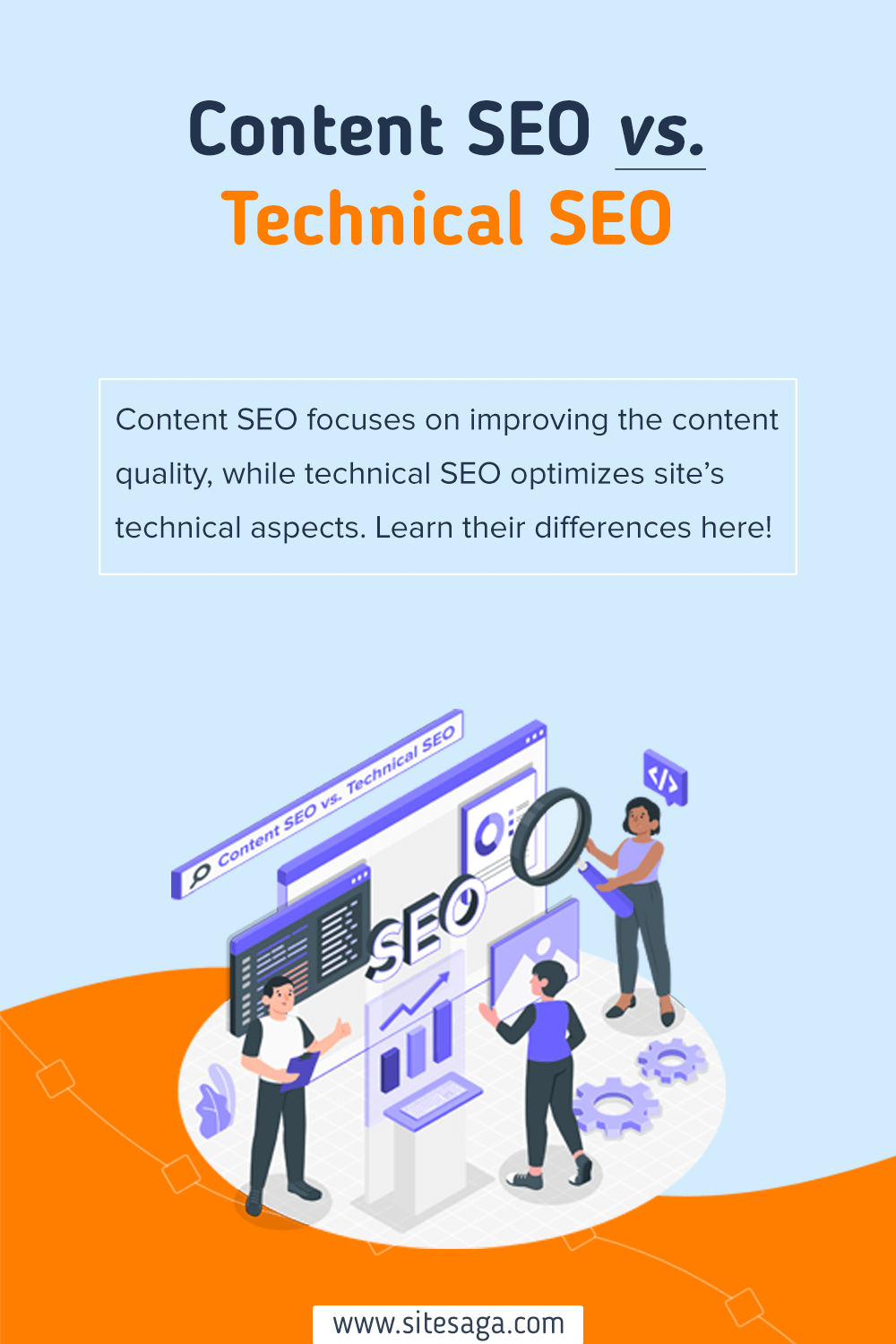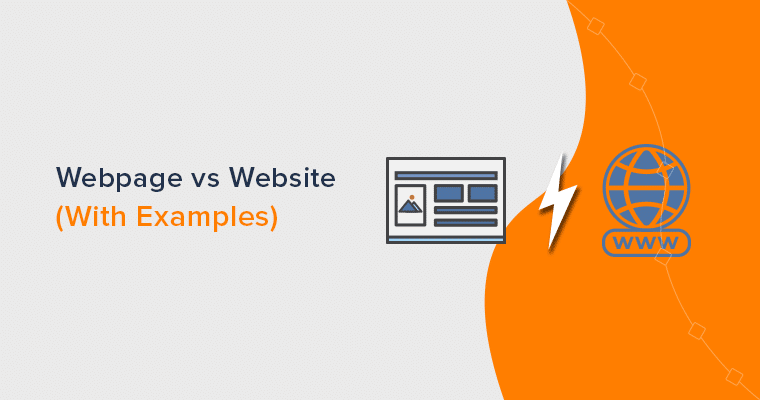Do you want to learn the differences between content SEO vs technical SEO? Or wondering how similar and different they are? If yes, then don’t go anywhere.
In the world of Search Engine Optimization (SEO), two key components stand out. Namely, content SEO and technical SEO.
Content SEO focuses on creating engaging and relevant content to attract organic traffic. On the other hand, technical SEO involves the optimization of technical website aspects for improved crawlability and performance.
Understanding the distinction between these two approaches is vital for formulating an in-depth SEO strategy. So, what are you waiting for? Here’s help!
This article revolves around the differences between content SEO vs technical SEO. And how they enhance your site’s visibility and organic growth. Now, let’s jump right into it!
What is Content SEO? – A Brief Introduction
First, SEO (Search Engine Optimization) is the practice of making improvements to a site. That’s to increase its visibility and rank higher in search engine results. Also, it involves various aspects to attract more organic traffic and boost online presence.
One of those SEO aspects is content SEO.
Content SEO deals with content creation, optimization, and promotion. Its main goal is to develop high-quality, user-friendly, relevant, and search engine-friendly content. So that it captivates, informs, and engages your intended audience.

Moreover, content SEO also ensures your content is easily discoverable by search engines. Hence, it focuses on implementing factors that search engines consider when ranking web pages. That includes keywords, headlines, internal linking structures, etc.
Overall, this SEO aspect strives to improve the visibility and ranking of your website. That’s by indicating to the search engines that your site offers substantial value. And hence deserves a higher position in search engines.
By focusing on content SEO practices, you can attract and retain the attention of your target audience. Also, it strengthens your website’s overall online presence.
Unveiling the Key Elements of Content SEO
Within content SEO, many components are present that you must be aware of. By incorporating them into your content strategy, you can enhance your chances of attracting organic traffic. Ultimately, it’ll reach your target audience effectively.
Among the various content SEO components, we’ve explained some key elements under 5 categories. Now, let’s dive into those content SEO elements!

1. Keyword Research and Optimization
Keyword research and optimization are vital components of content SEO.
Simply put, keyword research involves identifying relevant and valuable keywords in your niche that users are likely to search for. Similarly, keyword optimization lets you strategically incorporate those keywords into your site’s content.

Overall, conducting effective keyword research and optimization can improve your site’s visibility in search engines. This drives organic traffic, attracting the right audience.
You must consider the following points while performing keyword research and optimization:
- Brainstorm relevant topics related to your business, industry, or niche.
- Use keyword research tools like Semrush to find popular yet beneficial keywords in your niche. For that, consider factors like search volume, competition, etc.
- Analyze competitor keywords to discover new keyword opportunities.
- Incorporate keywords into your site’s content, like headings, titles, body text, etc.
- Make sure to keep keywords natural, avoiding their excessive use in the content.
- Also, you must include the keywords in your URL structure, image alt tags, etc.
- Continuously monitor the keyword rankings and performance of your content.
- Check out the search engine algorithm changes and adjust the content accordingly.

If you want to use Semrush as a keyword research tool, then here’s some help. We have a guide on how to use Semrush for free.
2. Search Intent Optimization
Search intent is the reason why people search for something online. It can be:
- Informational: To find answers or get knowledge.
- Navigational: When users look for a specific website or page.
- Transactional: If users want to make a purchase.
- Commercial: To research products or services before making a decision.
You must understand search intent because it lets you create content that meets user needs. Also, it helps your site appear in relevant search results.
Hence, search intent optimization lets you align your content with the user’s intent. Addressing search intent also improves user engagement, resulting in more organic traffic and conversions.

Here are some steps to follow when optimizing your content with search intent:
- Analyze the search queries related to your target keywords and discover their search intent.
- You can use keyword research tools to explore the search intent of keywords.
- Now, create content in a format that suits and directly addresses the search intent.
- Continuously analyze your site’s performance on various metrics. Then, adjust your content strategy based on the insights for optimized search intent.
Hence, search engines provide the most relevant results to users. So, aligning your content with search intent can increase your chances of a high ranking and attracting web traffic.
3. High-quality and Relevant Content
High-quality and relevant content is crucial to delivering accurate information to both users and search engines. For that, you must carefully strategize your writing style and structure.
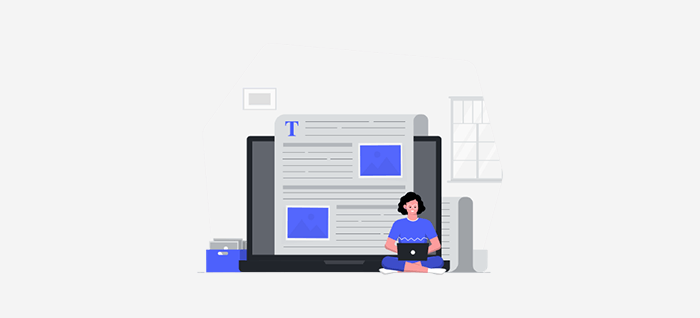
As said before, search engines rank web pages higher if they align with user intent. Plus, it also considers those websites with the most relevant and high-quality content.
Not to mention, quality content also improves your site’s user experience. Users tend to stay longer and explore more if the site has engaging content.
For quality content, you must follow these best practices:
- Conduct thorough research to understand your audience, their demographics, and their interests.
- Formulate a content strategy that aligns with your business goals. That includes the types of content and topics you’ll cover.
- Break your content into shorter paragraphs with subheadings to improve readability.
- Also, employ formatting elements like bullet points, numbered lists, etc. This makes your content easily scannable.
- Proofread your content before making it live to eliminate errors and inconsistencies.
- Plus, your web page should have an ideal length of content. Since longer content often performs well, ensure your content is in-depth and unique.
- Regularly publish new content on your website. Also, you must continuously review and update the content for accurate information.
For more guidelines, here’s a complete checklist of what makes a good website.
4. On-Page Optimization
On-page optimization involves factors you can control and optimize within the content of a web page. All that to improve visibility and ranking in search results.

Moreover, it maximizes the user experience and search engine friendliness. That’s done by ensuring search engines easily crawl and understand your content. Hence, it’s a vital foundation for effective SEO strategies.
The following list shows the key factors you must optimize for your on-site content:
- Title Tag: You should use a compelling yet concise title tag that includes your target keyword. It must describe your page’s content and entice users to click. Learn what a website title is here.
- Meta Description: Add a persuasive meta description using relevant keywords. Also, it should summarize the content well to increase click-through rates.
- URL Structure: Craft clean and readable URLs using the target keyword. Further, this should reflect your page’s content and not include irrelevant characters. Although you can use hyphens to separate words.
- Heading Tags: Heading tags (H1, H2, etc.) help you structure your content. The H1 tag is your main page headline that must use keywords. Further, add subheadings for better organization and readability.
- Multimedia Optimization: You must optimize your website’s media to reduce page load times. So, use descriptive filenames, insert alt tags with relevant keywords, compress the images, etc. Here’s a list of the best image optimization tools.
- Internal Linking: You must insert relevant internal links within your content to guide users to other pages. In addition, it helps search engine crawlers understand your site’s structure. If you want to fix broken links, then here’s a guide.

On-page optimization prioritizes improving the user experience and offering valuable content. But you should also optimize it for search engines, other than by creating content that resonates with your audience.
5. Some Off-Page Optimization Elements
Off-page optimization includes various activities performed outside of a site. Some of these external factors aim to improve search engine rankings and visibility. That’s why it’s an integral part of content SEO.

Further, it helps you increase the authority, credibility, and popularity of your site in the eyes of search engines. Instantly, this improves your rankings and attracts organic traffic.
Now, let’s check out those off-page optimization factors that lie within content SEO:
- Backlink Building: Backlinks are the incoming hyperlinks from other sites that point to your website pages. You must acquire high-quality backlinks from reputable sites to your content. With that, it signals search engines about your content’s credibility.
- Social Media Promotion: Social media marketing lets you and your users share your content on social media platforms. This improves site visibility, attraction, and engagement. Here are some social media tools for adding sharing buttons to sites.
- Influencer Outreach: You can collaborate with influencers or industry experts to promote your content and reach a wider audience. This also enhances your reputation and boosts the chances of your content being shared or linked to by others.
- Online Community: Engage with online communities, forums, and discussion platforms in your niche. Participating with them helps your content get attention. Use one of these community plugins if you use WordPress.
- User-generated Content: Utilize user-generated content like reviews or testimonials. These positive experiences and opinions can build your reputation and attract visitors.
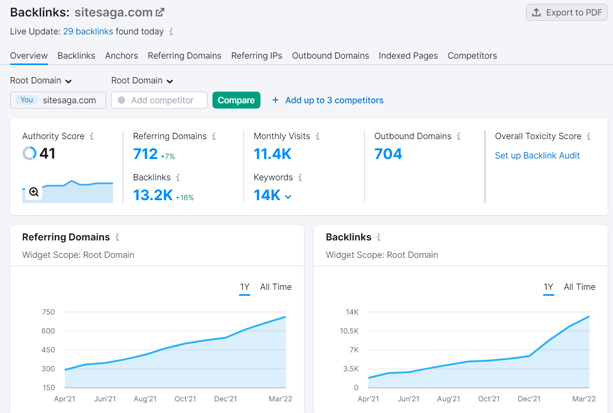
Hence, off-page optimization elements focus on building your site’s reputation. Ultimately, this attracts user attention and engagement. So, they are part of creating valuable content.
Confused between on-page and off-page SEO? Read this comparison article on on-site vs off-site SEO for a complete distinction.
Exploring the Benefits of Content SEO
The main objective of Content SEO is to optimize website content for improved visibility and ranking. After going through its key elements, we know that it has significance in many other areas.
In a nutshell, here are the benefits of implementing content SEO strategies:
- Increases Organic Traffic: Optimizing content for search engines attracts more organic traffic. As your site ranks higher, more visitors tend to click on your link.
- Improves User Experience: Suppose you provide high-quality and engaging content focusing on your search intent. Ultimately, this enhances your site’s user experience.
- Long-term Results: Content SEO can give sustainable results. Once you create quality content, it’ll continue to attract traffic and generate leads over time.
- Targeted Traffic: You can target relevant keywords for your niche in content SEO. Optimizing these keywords attracts users who are actively searching for information.
- Cost-Effective: Apart from the initial costs of content optimization, content SEO is a cost-effective solution in the long run. Without paying, you’ll keep getting organic traffic.
- Authority and Credibility: A high-ranking site in search results serves as a credible and authoritative source of information. So, users will trust your information.
Hopefully, you understand content SEO, its key elements, and its benefits.
Now, let’s move ahead and learn about technical SEO, another SEO aspect. Ultimately, you’ll find differences between content SEO vs technical SEO. Here we go!
What is Technical SEO? – A Brief Introduction
Technical SEO is the optimization process of a website’s technical aspects. Similar to content SEO, technical SEO focuses on improving website visibility. But that’s by ensuring your website’s performance is good in search engine rankings.

Simply put, it lets you optimize your website so that search engines can effectively crawl, index, and understand the content. This includes making adjustments to the website’s backend infrastructure and coding.
Some of the best technical SEO practices involve optimizing website speed, improving site architecture, implementing structured data, etc. By addressing all these technical elements, technical SEO can rank your website higher in search engine results.
Ultimately, this maximizes your site’s visibility and user experience.
Unleashing the Key Elements of Technical SEO
There are various best practices in technical SEO. If you incorporate them into your website, then it’ll improve its overall performance on search engines.
Among those elements, we’ve described some of them under 5 key categories. Now, let’s explore those technical SEO elements in-depth!

1. Website Security
Website security is a crucial factor that search engines prioritize for search engine rankings. In fact, a secure site not only improves your SEO efforts but also protects your visitors and their data online. As a result, this builds trust and boosts the user experience.

Hence, your technical SEO strategy should involve these elements for website security:
- SSL Certificate (HTTPS): You must implement an SSL (Secure Sockets Layer) certificate. This encrypts the transmitted data between a user’s browser and the website server, preventing unauthorized access to sensitive information.
- Reliable Hosting: Select a reputable web hosting provider. It should offer safety measures like server monitoring and firewalls to protect your website against threats.
- Regular Updates: You should regularly update all your site’s applications. That includes the site builder, tools, themes, plugins, etc. Updates have improved security options.
- Strong Passwords and User Permissions: Enforce strong passwords for all user accounts. You can encourage unique and complex passwords. And also utilize MFA (Multi-Factor Authentication).
- Regular Backups: Build a regular backup strategy that creates and stores site file copies in secure locations. Make sure to implement a quick restoration process. Here’s a list of the best backup tools.

Not to mention, website security is an ongoing process. You must stay up-to-date with the latest security practices and tools.
Overall, you must monitor and maintain your site’s security to protect your visitors. Plus, this results in improving your SEO and building trust among users and search engines.
Want to secure your domain? Here’s a complete guide on how to secure a domain. And if you use WordPress, then use one of the best WordPress security plugins.
2. Page Speed and Performance
Other vital technical SEO components are page speed and performance. They directly impact the user experience and search engine rankings.
In fact, slow-loading pages result in users abandoning a website. This increases bounce rates and lowers engagement metrics. So, if you provide good speed and performance, then you can keep visitors on your site for longer.

On the other hand, websites with fast-loading pages are more likely to rank higher in search results. Also, this influences various SEO metrics like bounce rate, time on page, and dwell time. If these metrics aren’t doing well, then it hampers your site’s quality and relevance.
Plus, your page speed and performance should also remain consistent on mobile devices.
These are some technical SEO techniques to improve page speed and performance:
- Optimize images and other multimedia without affecting the quality to reduce page load times.
- Lazy loading of images results in the display of images only when users want them.
- Minimize the HTTP requests needed to load a page. For example, combine CSS and JavaScript files to reduce loading speeds.
- Also, minify your codes on HTML, CSS, and JavaScript files to reduce file sizes.
- Use browser caching features so that your site loads instantly for returning visitors. This is a list of the caching tools you can use on WordPress websites.
- Utilize a CDN (Content Delivery Network) service to distribute your content across multiple servers globally. This quickly loads content for users from the closest server. Find the best CDN service providers on this list.

If you have a WordPress website, then choose from the best speed optimization plugins.
3. Crawling
Crawling is the process of collecting data from various sources on the internet. It’s done by automated bots called web crawlers.
In simpler terms, crawling involves visiting web pages, extracting information, and storing it. Then, crawlers perform further analysis or indexing.

Basically, it helps search engines discover and index web pages. So, it’s a vital element of technical SEO. Only when a website is easily crawlable does it become visible and appear in search engine results.
Hence, when optimizing a website for technical SEO, ensure the crawlers can access and understand certain elements effectively. Those key crawling elements are:
- Robots.txt: Ensure you keep this text file in the website’s root directory. This instructs crawlers on which pages or directories to crawl or exclude from crawling. A well-optimized Robot file can save a significant amount of the crawl budget of search engine bots.
- XML Sitemap: This sitemap gives a list of pages on your website for search engines to understand your site structure. So, your XML sitemap should be up-to-date. Choose a WordPress sitemap plugin from this list for your website.
- URL Structure and Internal Links: These on-page SEO elements also fall under technical SEO. Because they indicate your website’s navigation for search engines.
- Pagination: Suppose your site has paginated content, like blogs or product listings. Then, implement rel=“prev” and rel=“next” tags to indicate the pagination sequence for crawlers.
- Breadcrumb Menus: Breadcrumbs show where a user is within a website and ease their navigation back to higher-level pages. Also, this helps search engines navigate and understand page relationships. So, make sure you add them.
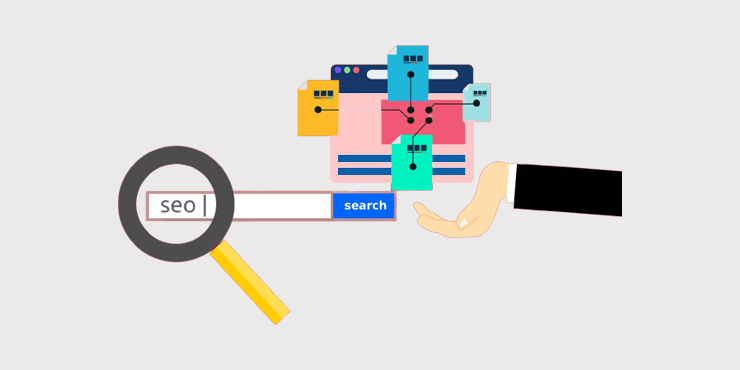
4. Indexing
After crawling, indexing takes place. But what is indexing?
Indexing is the process of adding a website’s pages to a database of search engines. There, the information is organized and categorized. Then, an analysis of content and information attributes takes place to create an index.

Now, this index acts as a roadmap that helps users find the specific information they’re looking for. Hence, indexing eases the search and retrieval of information from a larger collection.
In fact, indexing involves all the major crawling components. Plus, some additional indexing components vital for your technical SEO strategy are:
- Remove Duplicate Content: Having duplicate content can negatively impact a site’s indexing and rankings. So, you must find and resolve them by setting canonical tags, combining similar pages, etc.
- Website Audit: Regularly conduct a website audit to detect and address technical issues. This makes your content more relevant, improving its visibility and performance in search engine results.
- Mobile Optimization: Ensure your site is responsive and mobile-friendly. It gives a seamless user experience plus helps in indexing and ranking.
- Unblock Search Bots: Check that the search engine bots can access and crawl all your major web pages. There can be unintentional blocking mechanisms for bots.
- Redirection: Redirection guides crawlers to properly index your content. So, regularly audit those redirects so that there aren’t broken or incorrect redirects. Here, 301 is for permanent redirects, while 302 is for temporary redirects.
- HTTP Errors: 404 (Not Found) or 500 (Internal Server Error) can hinder crawlers from indexing your web pages. So, regularly monitor and address such HTTP errors.

All these elements are indeed crucial for technical SEO. They impact how search engines crawl, index, and understand your website’s content. So, ensure these aspects are addressed for overall SEO performance.
5. Structured Data
Structured data is a standardized format for giving additional context and meaning to web content. It uses a specific vocabulary referred to as schema markup to interpret various elements on a web page.

The major goal of structured data is to help search engines understand and display relevant information in search results. The following list includes key structured data elements in technical SEO:
- Schema.org: Schema.org is a project of multiple search engines. It offers a library of structured data schemas that webmasters use to mark up their content. Hence, ensure your website uses it.
- Rich Snippets: Structured data gives more context about your content. These help in the formation of rich snippets in search results showing advanced information. For example, star ratings, product prices, etc. So try to get these rich snippets.
- Local Business Information: If you own a local business, then use structured data to provide the business information. This helps search engines display them on search results and Google Maps.
- Rich Results: Rich results are search results sections like ‘People also ask’, video thumbnails, image packs, etc. Try to be a part of the rich results. They are formed from structured data markup, content relevance, and search engine algorithms.
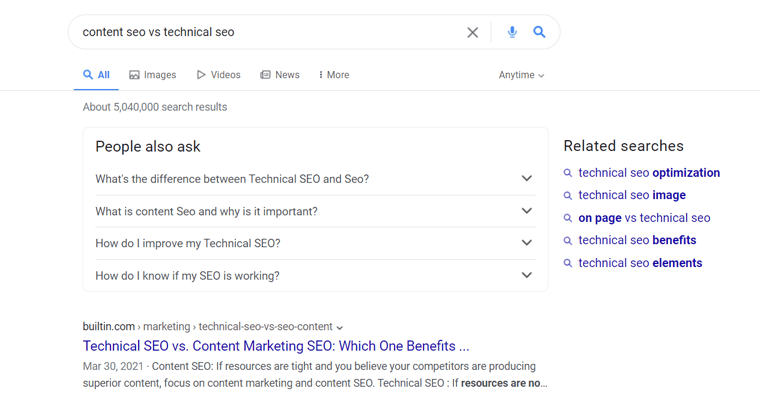
Creating accurate, structured data improves your content’s visibility in search results. Also, it offers a good user experience, as you’ll get relevant and informative snippets.
But you should follow search engine guidelines and test their implementations. For that, use tools like Google’s Structured Data Testing tool or Rich Results Testing tool.
Discovering the Benefits of Technical SEO
The major goal of technical SEO is to improve a site’s visibility and performance in search engines. Mainly through enhanced indexing and crawling abilities.
After going through its key elements, we know its significance in many other areas. In a nutshell, the following are some of the benefits of implementing technical SEO strategies:
- Better Mobile User Experience: Technical SEO includes mobile optimization, responsive web design, and AMP (Accelerated Mobile Pages). They make your website work well across all devices, improving its ranking in mobile search results.
- Outstanding Website Security: By implementing security measures, you won’t just have a secure website. But it helps your website rank higher on search engines.
- Website Accessibility: Optimizing your website to be more accessible to users with disabilities is a technical SEO practice. This helps your site reach a wider audience.
- Web Analytics: You can analyze your website’s performance after applying technical SEO strategies using analytics tools. This gives you valuable insights that you can further use to make data-driven decisions.
- Resolve Technical Issues: Regularly monitoring the technical elements lets you find and address technical errors and issues. This helps you maintain a healthy website.
With that, you may have a distinction between content SEO vs technical SEO. If you want a clear comparison, then keep reading!
What are the Differences Between Content SEO vs Technical SEO?
Content SEO and technical SEO are two different aspects of SEO. They mostly focus on different elements of a website. Similarly, you can compare them based on various factors.
Here, let’s learn the differences between content SEO vs technical SEO:
1. Main Focus and Goals
The main focus and goals of content SEO and technical SEO are different. The table below shows their distinctions based on their main focus and goals:
| SEO Aspects / Differences | Content SEO | Technical SEO |
| Main Focus | Optimizing the website content to make it relevant and engaging. | Optimizing the website’s technical components to improve its visibility on search engines. |
| Goals | Improving search engine rankings and increasing organic traffic by targeting relevant keywords and providing optimized content. | Enhancing search engine rankings and organic traffic by letting search engines easily crawl, understand, and index a website’s content. |
2. Elements
We already came across the various key elements of content SEO and technical SEO. For a better understanding, let’s quickly identify them in the table below:
| Content SEO | Technical SEO |
| Includes keyword research and optimization, quality content creation based on user intent, on-page elements, and some off-page elements. | Involves website security, speed, performance, different crawling and indexing components, and the formation of structured data. |
3. Google Ranking Factors
Google ranking factors are the criteria that Google’s search algorithm uses to order web page rankings in search results. The exact factors aren’t disclosed; however, some widely accepted factors influence them.
In the table below, we’ll look at those Google ranking factors that content SEO and technical SEO take into account:
| Content SEO | Technical SEO |
| Some factors include keyword relevancy, keyword density, content length, social media mentions, engagement metrics (like time on page, bounce rate, click-through rates), etc. | Some factors include page load time, crawl errors, the number of indexed pages, server response time, mobile conversion rate, etc. |
4. Required Skills and Expertise
Both content SEO and technical SEO require certain skills and expertise before getting started. But as their entire goal is different, you’ll need contrasting skills.
If you’re wondering, then check out the table below. It shows what skills you need for implementing content SEO and technical SEO:
| Content SEO | Technical SEO |
| Requires skills in keyword research, content creation, copywriting, on-page optimization, user intent analysis, etc. Also, it involves understanding audience needs, analyzing user behavior, and accordingly refining strategies. | Requires skills in website development, server-side configurations, performance optimization, etc. Similarly, you have to understand search engine algorithms, site analytics, and more. |
5. Useful Tools
You can find numerous tools that ease your content SEO and technical SEO processes. Here we’ll compare content SEO vs technical SEO based on the different tools to use. Let’s see!
| Content SEO | Technical SEO |
| – Keyword research (Semrush, Moz Keyword Explorer, etc.) – Content optimization (Yoast SEO for WordPress) – Analytics tools (like Google Analytics, Google Search Console, etc.) | – Website analysis and auditing (GTmetrix, Google PageSpeed Insights, etc.) – Crawling and indexing (Google Search Console, Bing Webmaster Tools) – Structured data testing (Google’s Structured Data Testing tool) |
6. Team Members and Collaboration
To implement content SEO and technical SEO strategies, you must have certain skills and expertise. For a business with multiple teams, you should collaborate with each other.
The table below displays which team members should collaborate to conduct these SEO aspects. Here we go!
| Content SEO | Technical SEO |
| Collaboration between content writers, editors, SEO specialists, graphics designers, video editors, and digital marketers. Also, you must collaborate with subject matter experts to understand user intent and accordingly create valuable content. | Collaboration between web developers, server administrators, SEO specialists, and IT professionals. This collaboration helps address any site infrastructure or performance issues. |
If your business includes all these skills and teams, then you can start implementing the strategies. Otherwise, you must hire new professionals or learn the skills to move forward.
Haven’t you started your website yet? Read this guide on how to make a website with a step-by-step process.
Frequently Asked Questions (FAQs) on Content SEO vs Technical SEO
Finally, here are some FAQs you can read out loud to solve basic confusion regarding content SEO vs technical SEO.
Both content SEO and technical SEO are vital for a thorough SEO strategy. Content SEO ensures your site’s content is relevant and optimized for users and search engines. While technical SEO checks if your site’s technical foundation is solid. Neglecting anyone can hinder your overall SEO efforts.
With content SEO, you may have well-optimized content for users. But technical issues can affect its visibility and accessibility to search engines. Hence, good content SEO without utilizing technical SEO can limit your reach and content potential.
Technical SEO optimizes the technical website aspects. But without high-quality content, it becomes hectic to achieve sustainable SEO success. Only content SEO can attract and retain visitors. So, combining content SEO with technical SEO is vital for better results.
You can develop basic content SEO and technical SEO strategies yourself by following the best practices available online. But for complex optimizations and technical aspects, it’s beneficial to hire an SEO expert or agency for professional assistance.
The time it takes to see results from your SEO efforts depends on the industry’s competitiveness, the website’s current state, etc. Basically, it may take from a few weeks to several months for noticeable improvements in search engine rankings and organic traffic.
Conclusion
And that’s all! We’re at the final part of this content SEO vs technical SEO guide. Hopefully, you understand the differences between content SEO and technical SEO.
In a nutshell, both content SEO and technical SEO are vital for any website. Content SEO optimizes site content, while technical SEO optimizes the site’s technical aspects. They include some common elements, while others are different.
If you’re still confused, then list your queries in the comment. We’ll try to find solutions to answer your questions.
In addition, please read our articles on the best SEO tools and the best SEO web hosting. Also, share our blogs you like with your friends, colleagues, and family.
Last but not least, follow us on Facebook and Twitter to find the latest articles.

